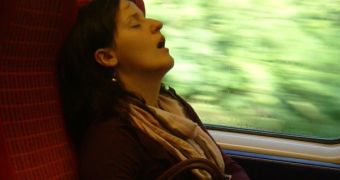Snoring is an issue affecting a large part of the world's population, and is a cause of discomfort and embarrassing situations for both those who have it and those who experience it. Experts have been trying to find ways of reducing its effects for a very long time, but studies have come up short of providing a universal solution. Now, experts believe they may have found a minimally invasive procedure that is effective in reducing the unpleasant phenomenon. The technique, known as radiofrequency ablation, has proven highly successful in tests.
The method essentially uses heat to shrink the tissue on the soft palate, in a procedure that is largely painless. At the 2009 American Academy of Otolaryngology – Head and Neck Surgery Foundation (AAO-HNSF) annual meeting & OTO EXPO, held in San Diego, scientists tried to assess the possible outcomes of a prospective study on 60 participants, all of which snored when asleep. The procedure in itself is not new per se, as it has been in use for a few years, especially in treating primary snoring, which is, essentially, snoring without sleep apnea.
In spite of its short-term benefits, no long-duration advantages had been identified to date, scientists reported at the meeting. Doctors select it for its minimally invasive character, but have no higher expectations from it. Still, experts admit that the snoring score is noticeably reduced from the levels it had before the radiofrequency surgery. The drop was recorded after only two treatment sessions using the technique, they revealed. Some 76 percent of the patients reported they were satisfied with receiving this treatment, after a three-year, follow-up period, e! Science News reports.
The main goal experts expressed at the meeting was for the new study to be able to provide healthcare experts with more options in assigning a certain type of snoring treatment to each patient. They argued that this was essential for people's health, as snoring had been associated with a higher incidence of obstructive sleep apnea. This is a condition in which a physical obstacle blocks a person's airways during sleep, without that person realizing it. The long-term effects of this condition are severe, and patients can suffer ill-effects for decades to come.

 14 DAY TRIAL //
14 DAY TRIAL //